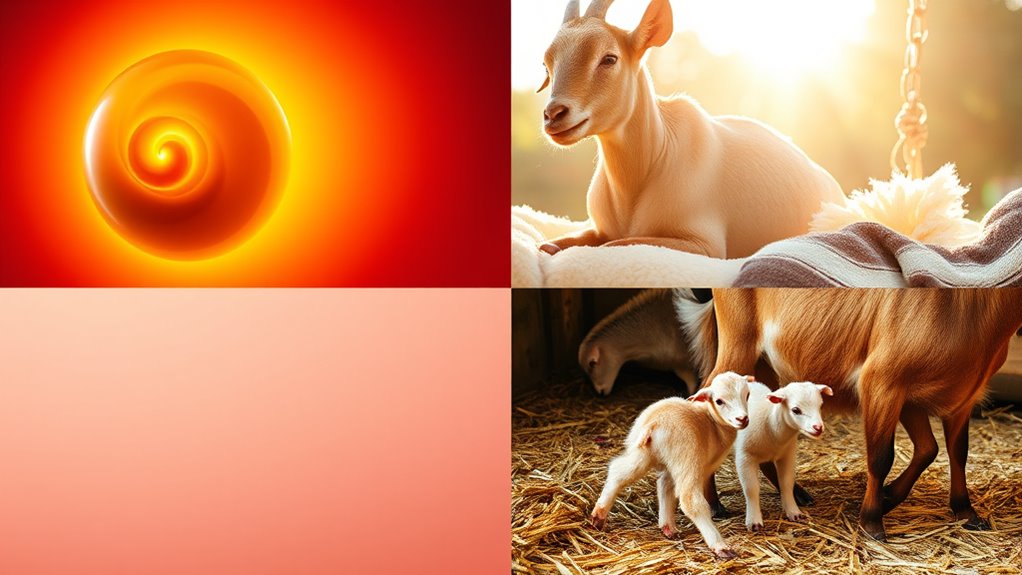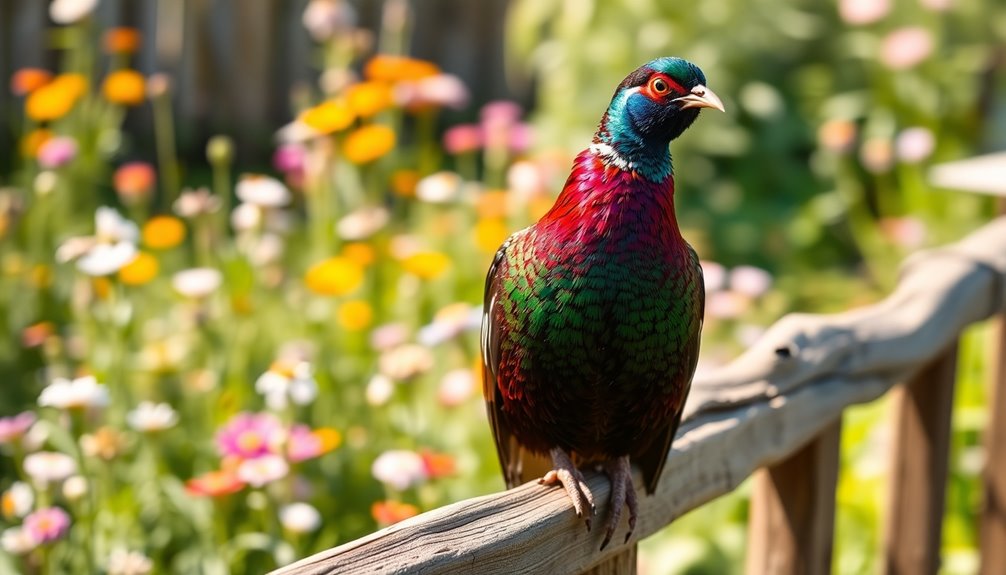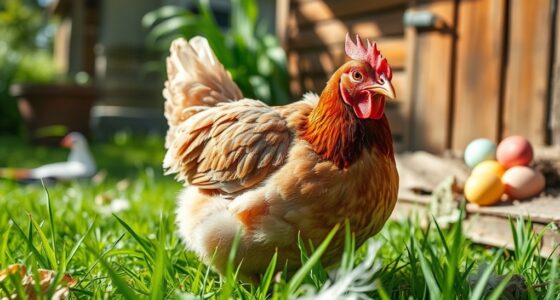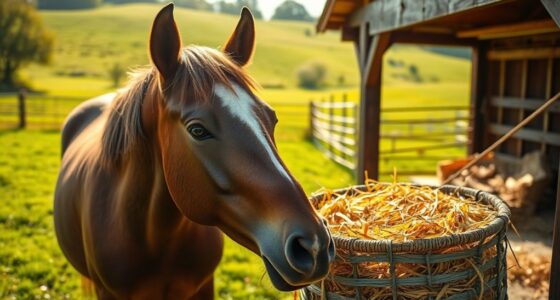Goat pregnancy unfolds in stages: after conception, the first trimester sees early development with organ formation. In the second trimester, the fetus grows rapidly, and the doe's behavior changes. The third trimester is all about preparing for kidding, with increased nutritional needs and facility readiness. You'll notice signs of pregnancy like weight gain and behavioral shifts. By knowing these stages, you can better support your doe during her journey to motherhood. There's much more to uncover about each phase.
Key Takeaways
- Goat gestation lasts 145 to 150 days, with larger breeds potentially influencing gestation length.
- Early development includes fertilization, organ formation, and the embryo's heart starting to beat by day twenty.
- In the second trimester, major organs develop, and the fetus reaches about 4 inches in length by day sixty.
- The third trimester involves preparing kidding facilities and increasing nutritional needs to support the doe and her kids.
- Signs of pregnancy include increased appetite, weight gain, and behavioral changes, with restlessness indicating labor is nearing.
Understanding Goat Gestation Period
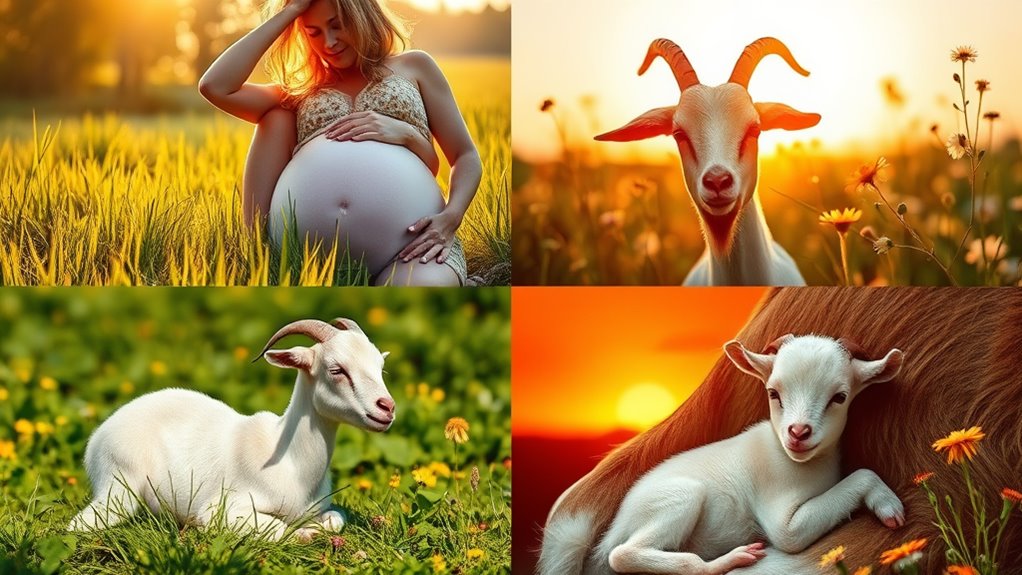
When you're raising goats, understanding the gestation period is crucial for successful breeding and care. Typically, goat gestation lasts between 145 to 150 days, but smaller breeds might deliver about five days earlier.
Pay attention to your does' nutritional needs, especially in the last month, to support healthy fetal development and prevent complications like ketosis. Regular health checks are essential to monitor their well-being and ensure a smooth pregnancy.
Keep detailed records to track gestation lengths and health statuses. Factors like breed size and litter size can influence gestation, so be aware that larger breeds and multiple kids may lead to longer or shorter periods.
Proper preparation sets the stage for a successful kidding experience.
First Trimester: Early Development

As your doe enters the first trimester of pregnancy, you'll witness remarkable early development in the embryo.
Fertilization occurs when a sperm penetrates the egg, creating the morula stage just a day and a half later, where it divides into eight cells. By days six to seven, it evolves into a blastula, which hatches from its protective layer and forms a blastocyst, attaching to the uterine wall around two weeks after fertilization.
Fertilization triggers rapid development, transforming the egg into a blastocyst that attaches to the uterine wall by two weeks.
The embryonic period kicks off around day twelve, marking the start of major tissue and organ development. By day twenty, the embryo's heart begins to beat, and by day thirty, it measures about 1.4 cm.
Providing a balanced diet and clean water is crucial during this time for optimal growth.
Second Trimester: Growth and Changes
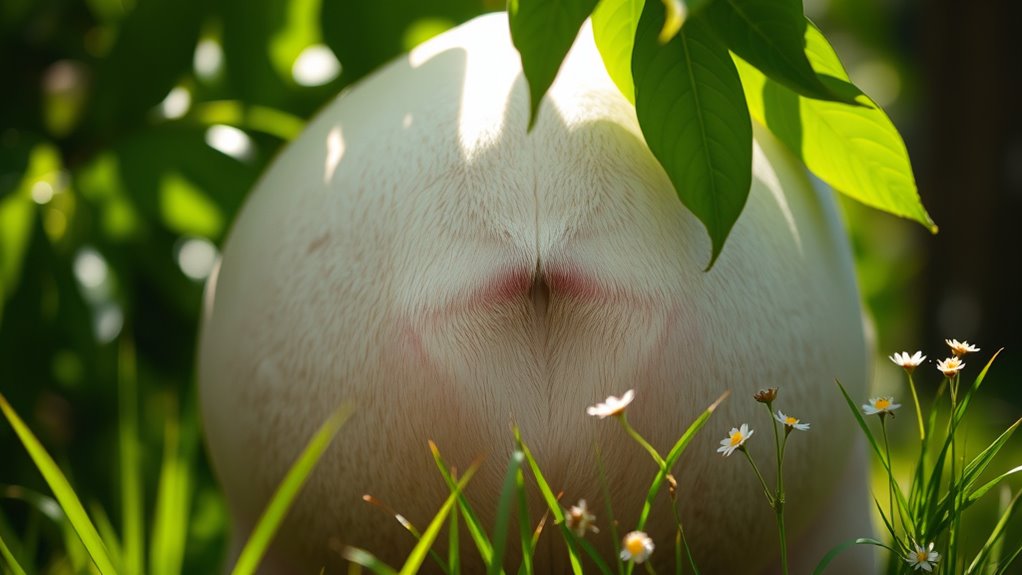
During the second trimester, your doe undergoes significant growth and changes that are essential for the developing fetus. This period lasts from around 51 to 100 days of gestation, with the fetus reaching about 4 inches in length by day 60.
Major organs begin to form, and the fetus develops sensory capabilities like vision and hearing. You'll notice your doe gaining weight and possibly showing behavioral changes, such as increased restlessness.
Nutritional needs stay similar to the first trimester, so maintaining a balanced diet is crucial. Keep her in familiar social groups to reduce stress, and schedule regular health checks to monitor for any potential issues.
These steps will support both her health and the fetus's development.
Third Trimester: Preparing for Kidding
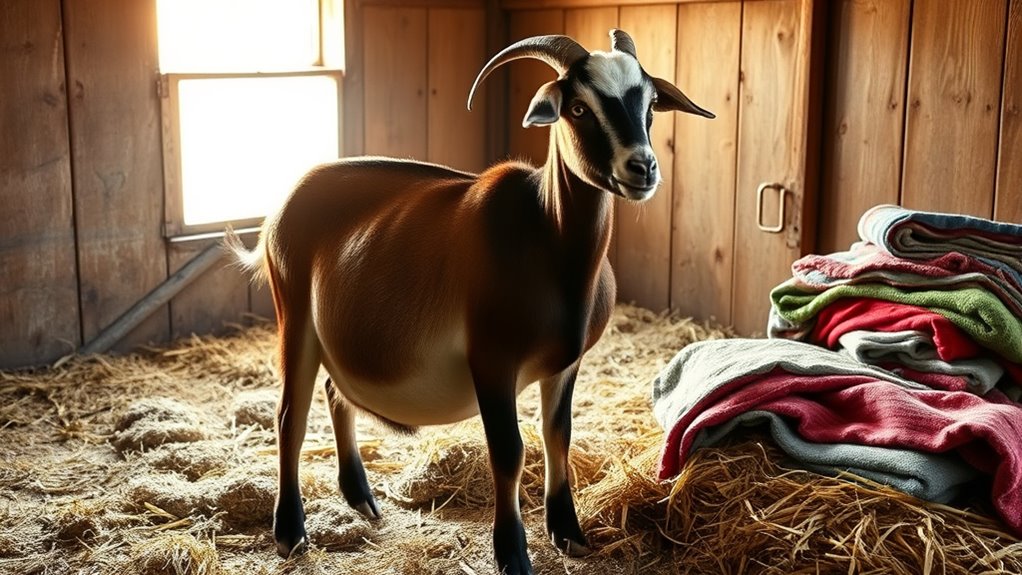
Preparing for the arrival of new kids requires careful planning and attention to detail, especially in the third trimester of your doe's pregnancy.
Start by cleaning and preparing kidding facilities in advance. Set up kidding pens for weak kids or reluctant mothers, and ensure heat lamps are in place if it's cold. Consider building kid incubators to keep newborns warm.
Clean and prepare kidding facilities ahead of time, ensuring pens and heat lamps are ready for newborns.
Nutritionally, your doe's needs almost double, so supplement her diet with grain and alfalfa while providing high-quality hay if pasture isn't available.
Vaccinate her for Clostridium type C&D and tetanus four weeks before kidding, and keep an eye on her health. Trim her feet and monitor her closely to catch any potential issues early.
Signs of Pregnancy in Does

Recognizing the signs of pregnancy in does is vital for ensuring proper care throughout their gestation. Early indicators include a failure to return to heat, an increase in appetite, and noticeable weight gain within two weeks.
As pregnancy progresses, you might observe changes in milk production and behavioral shifts, like increased aggression or withdrawal. Look for physical changes, such as a swollen midsection and udder development around six weeks in first-time does.
Tail ligaments soften as birth approaches, and the vulva may drop. For confirmation, consider methods like ultrasound or blood tests.
Keep an eye out for restlessness and nesting behavior as labor nears—these signs indicate your doe is preparing for the arrival of her kids.
Preparing for Successful Kidding
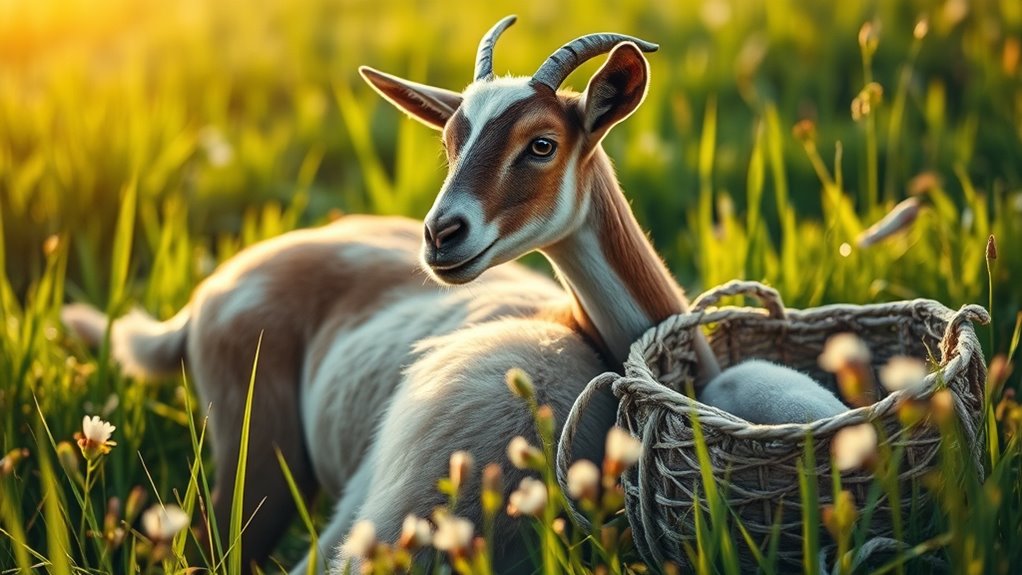
As you approach the kidding season, ensuring your facilities and equipment are ready can make all the difference in a smooth birthing process.
Start by cleaning and disinfecting the barn, and set up kidding pens with fresh straw for safety. Install heat lamps to keep newborns warm, especially in colder weather, and have emergency lighting ready for nighttime births.
Assemble a kidding kit with latex gloves, disinfectants, towels, and bottles for weak kids. Ensure your does are vaccinated and dewormed before kidding, and keep veterinary contact information handy.
Monitor the kidding process closely, assisting only when necessary, and provide post-kidding care by drying kids and ensuring they get colostrum promptly.
Frequently Asked Questions
How Can I Tell if My Goat Is Pregnant Early On?
To tell if your goat is pregnant early on, watch for a few key signs.
You might notice she hasn't returned to heat and her appetite's increased.
Look for any changes in her belly shape or behavior, like being more withdrawn.
If you're milking her, a decrease in milk production could also indicate pregnancy.
Observing these early signs can help you determine if she's expecting before more obvious changes occur.
What Are Common Health Issues During Goat Pregnancy?
During goat pregnancy, you might encounter several common health issues.
Pregnancy toxemia can arise, especially with multiple fetuses, while dystocia could lead to difficult labor.
Nutritional challenges are crucial; ensure your goat gets the right feed to prevent metabolic disorders.
Regular body condition monitoring can help you identify at-risk goats.
Don't hesitate to seek veterinary intervention if complications arise, as prompt care can make all the difference for both the doe and her kids.
Can Stress Affect Goat Pregnancy Outcomes?
They say, "A calm sea never made a skilled sailor."
Stress can definitely affect goat pregnancy outcomes. When you expose pregnant does to stress, it can lead to behavioral changes in their kids, increasing fear and anxiety.
Environmental factors like heat can shorten gestation and alter maternal behavior, impacting development.
Adequate nutrition and a stress-free environment are crucial for healthy kids, as prenatal stress can have lasting effects on their growth and behavior.
How Many Kids Can a Goat Have at Once?
A goat can typically have between one and three kids at once, though some may have as many as four, which is rare.
Factors like nutrition, age, and genetics influence litter size. You'll often see does giving birth to one or two, but well-managed older does can surprise you with larger litters.
What Are the Signs of Complications During Pregnancy?
When you're watching your doe, keep an eye out for signs of complications during pregnancy.
If she's isolating herself or has a decreased appetite, it could signal pregnancy toxemia. Swollen limbs and tremors may indicate hypocalcemia, while recumbency suggests severe distress.
You'll also want to monitor for ataxia, which can be serious. Early detection is key, so regular checks can help ensure her health and the safety of her kids.
Conclusion
In the journey of goat pregnancy, each stage is like a dance, with the doe gracefully moving through the rhythms of life. By understanding these phases, you can better support her and ensure a smooth transition to motherhood. Keep an eye out for signs of pregnancy and prepare accordingly, as a little foresight can make all the difference. With your care and attention, you'll welcome those new kids into the world ready to thrive.

